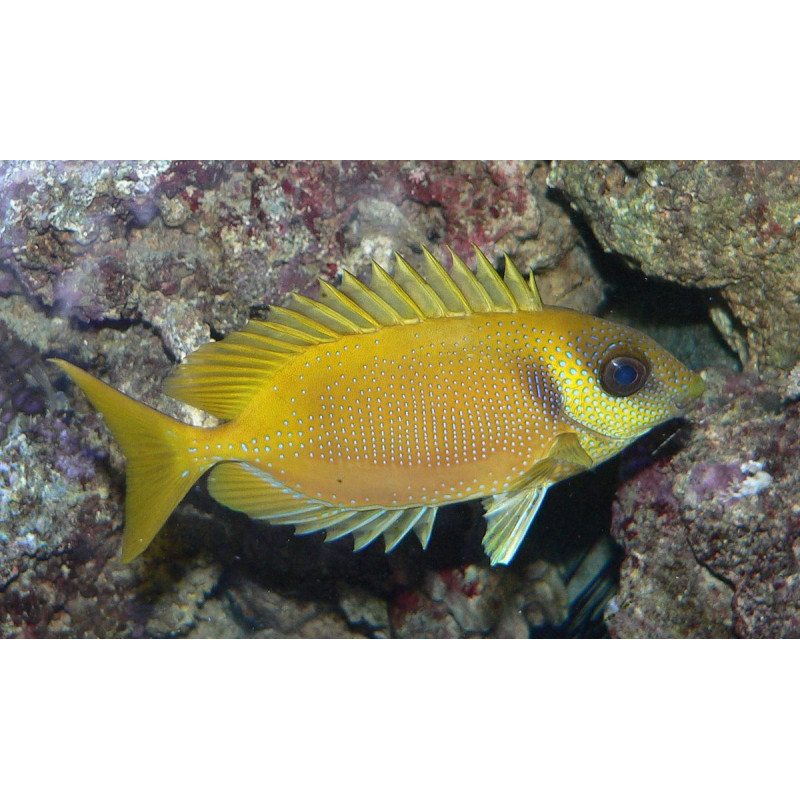More info
A pair of Coral rabbitfish spend about 80% of their time together and are rarely out of visual range . One fish often probes deeply into a crevice for food , while the other remains alert nearby . Without the presence of the second fish , the shepherd would be at greater risk of being attacked by an invisible predator and would likely not benefit from feeding opportunities that left him unnoticed in this way .
Siganus corallinus is a marine fish that occurs in tropical regions , especially found in the western Pacific Ocean .
| Common name: | Blue-spotted rabbitfish, Coral rabbitfish |
| Scientific name: | Siganus corallinus |
| Size: | Grows up to 35cm in the wild, smaller in captivity |
| Distinctive features: | Distinguished by several blue lines on a yellow body. This pattern resembles a circuit board in appearance. Sometimes called the scrawled rabbit fish for this reason. |
| Origin: | Ranges from the Western Pacific to eastern Australia |
| Natural habitat: | Found on coastal reefs, usually travels in pairs |
| Power requirements: | These fish are relatively easy to feed. They require a diet rich in plant matter, but they also accept meaty foods. They will accept flakes, frozen or freeze-dried foods and will also graze annoying algae from aquarium decor. |
| Difficulty | relatively easy |
| Aggression Rating: |
It is normal to display mild aggression towards a new addition, but rarely engage in violent behavior. Relatively peaceful. |
| Captive requirements: | These fish do best in established reefs. Large amounts of live rock for grazing are preferred. The reef tank's default parameters are ideal. A tank of at least 400L is recommended to prepare for the potentially large adult size. Once acclimatized, they are very hardy and live many years in captivity. Care must be taken when handling these fish due to the venom in the spines . |
| Optional Requirements: | These fish will readily accept macroalgal supplemental food from a refuge. |
| Reef tank compatibility: | Blue spotted rabbitfish are best kept in an established reef tank. They are safe when kept with corals and ignore crustaceans and ornamental invertebrates. While there are reports of individuals consuming corals, the vast majority will ignore these creatures in favor of competing algae. Also, supplementing prepared foods will make the fish less likely to sting the reef. Attention should be paid to the large potential size this fish can reach, the increased biological load and the possible side effects this can have on invertebrates in a reef display. |
| Reproduction: | Rabbitfish become sexually mature after one year. They produce up to five hundred thousand eggs each season. The larval stage is three to four weeks and will require both phytoplankton and zooplankton to feed. These fish have potential for future marine aquaculture. |
| Notes: | There are about 30 species of Rabbitfish in total, many of which look very similar. They have an unusually high number of spines on their fins, all of which are venomous. Care must be taken when handling this fish to avoid a painful stab. In the wild, they usually travel in pairs, but have been known to shoal from time to time. Juveniles and adults are harvested in large numbers for the food trade. They are considered an important food source in many countries. |
Reviews
No customer reviews for the moment.


